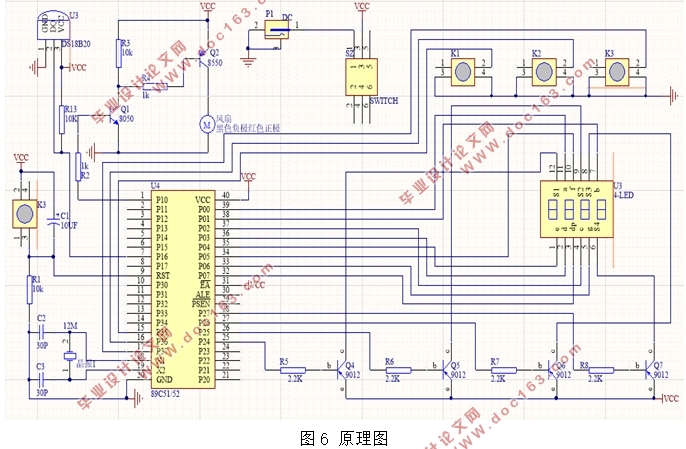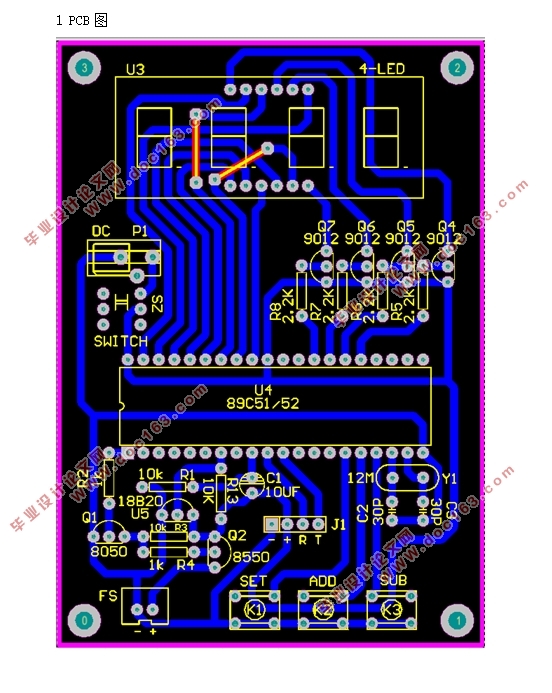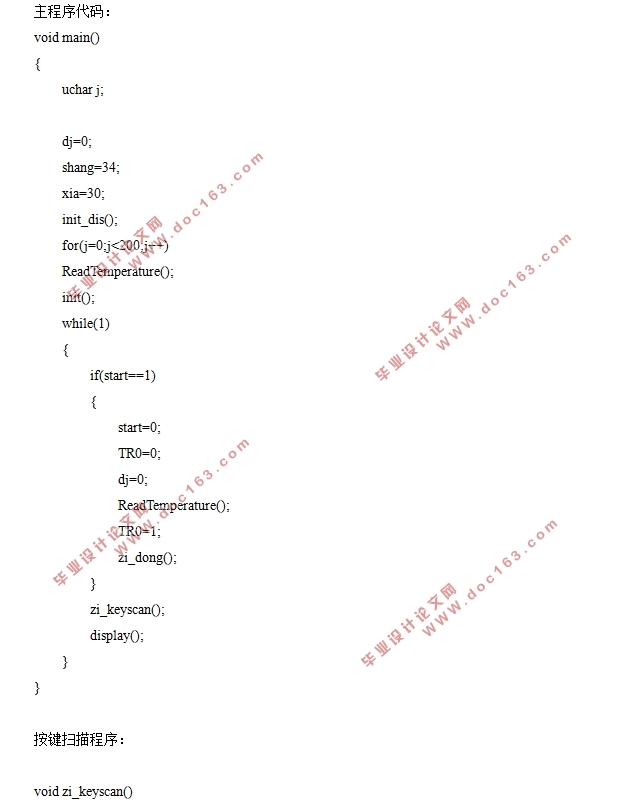基于51单片机的温控风扇设计(附原理图,PCB图)

1.无需注册登录,支付后按照提示操作即可获取该资料.
2.资料以网页介绍的为准,下载后不会有水印.资料仅供学习参考之用.
密 惠 保
基于51单片机的温控风扇设计(附原理图,PCB图)(论文8000字)
摘要:
本文采用DS18B20数字传感器测量温度,与用户预设温度值比对,通过51单片机控制风扇电机转速,预设温度与环境温度值在三极管上输出显示,实现在一定温度以上风扇转动,并在不同温度时转速不同的功能,在环境温度低于预设温度值时,风扇停止转动。
关键词:51单片机;温度控制;DS18B20;风扇
Design of Temperature Control Fan based on 51 Single Chip Microcomputer
Abstract:
In this paper, DS18B20 digital sensor is adopted to measure the temperature and compare it with the preset temperature value of the user. The fan motor speed is controlled by 51 single-chip microcomputer, and the preset temperature and the ambient temperature value are output and displayed on the audion, so as to realize the fan rotation above a certain temperature and the function of different speed at different temperature. When the ambient temperature is lower than the preset temperature value, the fan stops rotating.
Key words:single chip microcomputer; temperature control; DS18B20; fan
[资料来源:http://THINK58.com]



目 录
第一章 绪 论..............................................................3
1.1 国内外研究现状........................................................3
1.2 研究背景和意义........................................................3
1.3 研究内容..............................................................3 [资料来源:http://THINK58.com]
第二章 系统设计..........................................................3
2.1 系统整体的设计........................................................2
2.2方案论证..............................................................2
2.2.1 温度传感器的选择................................................3
2.2.2 控制核心的选择..................................................3
2.2.3 显示电路的选择..................................................3
2.2.4 调速方式的选择..................................................4
第三章 各单元模块的硬件设计..........................................5
3.1 系统器件简介..........................................................5
3.1.1 DS18B20单线数字温度传感器简介..................................5
3.1.2 达林顿反向驱动器ULN2803简介....................................5
3.1.3 STC89C51单片机简介.............................................6
3.1.4 LED数码管简介..................................................6
[来源:http://think58.com]
3.2电路设计..............................................................6
3.2.1 独立按键连接电路................................................6
3.2.2 数码管显示电路..................................................7
3.2.3 温度采集电路....................................................7
3.2.4 风扇电机驱动与调速电路..........................................8
3.2.5 原理图..........................................................8
第四章 软件设计..........................................................8
4.1 程序设置..............................................................8
4.1.1 主要程序代码....................................................8
4.2 用Keil C51 编写程序..................................................12
4.3 用Proteus进行仿真...................................................12
4.3.1 Proteus简介....................................................12
4.3.2 本设计基于Proteus的仿真.......................................12
第五章 系统调试........................................................16
5.1 软件调试.............................................................17
5.1.1 按键显示部分的调试.............................................17
5.1.2 传感器DS18B20温度采集部分调试.................................17
5.1.3 电动机调速电路部分调试.........................................17
5.2 硬件调试.............................................................17
5.2.1 按键显示部分的调试.............................................17
5.2.2 传感器DS18B20温度采集部分调试.................................17
5.2.3 电动机调速电路部分调试.........................................18
5.3 系统功能.............................................................18
5.3.1 系统实现的功能.................................................18
5.3.2 系统功能分析...................................................18
第六章 结束语...........................................................18 [资料来源:www.THINK58.com]
参考文献..................................................................19
致谢.......................................................................20
